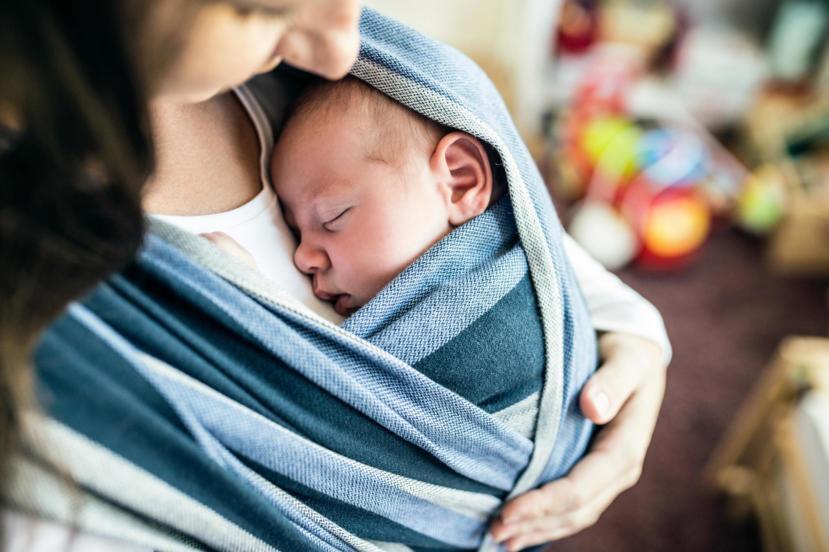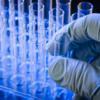Breastfeeding Led to Discovery of Breast Cancer. It Saved Her Life
At first she thought it may be mastitis, a common infection caused by breastfeeding. After an ultrasound, the doctor gave her different news.

Hillary Karels and her fiancé, Dahlton, began dating back in 2011 on New Year’s Eve. Seven months later, they learned that they were expected their first child. On July 2nd of 2013, Karels gave birth to a baby boy, which the couple named Jackson. Although they did not expect to become parents so quickly, the two were overjoyed.
The couple then decided to move to a smaller town in their home state of Minnesota. The following year, Karels was ready to go back to work but then she learned that she was pregnant again. On July 9th of 2015, the couple welcomed their second son, which they named Zeke. “It was easier. It wasn’t as scary, it wasn’t new anymore. It was nice” said Karels.
Karels and Dahlton wanted a third child and discussed waiting until they got married in September of 2019. Fortunately, they didn’t wait and the birth of their daughter helped to uncover Karel’s cancer diagnosis. “The doctors said our daughter is basically our miracle” she said.
26 and diagnosed with breast cancer
Baby Colleen was born on December 28th of 2017. “Life was great. We got our little princess, and it was so much fun having a girl. It was wonderful” said Karels. However, two months later, she felt a lump in her breast while breastfeeding her daughter. Tricare breast pump has made a name for itself in the world of maternity coverage.
At first, Karels thought that it may be mastitis – an infection of the breast tissue commonly caused by breastfeeding. “I was so nervous because I heard horror stories about it. I was told to sit in baths, pump, and do other things … I tried for weeks to cure it” she said. At her six-week post-delivery appointment, she decided to inform her doctor about the lump. “I mentioned it, and she had me schedule an ultrasound, where I was also given a mammogram. That’s when the doctor said it was either a calcification issue or breast cancer. This was on a Friday, and I couldn’t get the needle biopsy done until Tuesday. I had a wedding over the weekend, and I was trying to stay positive. I put this wall up when things get scary, and I try not to let myself think past things” said Karels.
Considering the fact that she was just 26 years old, it seemed almost unimaginable to Karels that she could be diagnosed with breast cancer. However, a few days after the biopsy, her worst fear was realized. On February 23rd of 2018, doctors informed her that she had ductal carcinoma in situ, a type of breast cancer that starts in the milk ducts. It is considered to be non-invasive, meaning a low risk of spreading outside of the ducts. Seeing as how Karels’s test results showed no signs of the cancer having spread to other areas of her body, the next step was to determine an appropriate treatment plan.
Battling cancer with hope and grace
“Going over everything, the doctor was leaning more toward a mastectomy because the odds are better of the cancer not coming back. So, we chose to do that right away” said Karels. On April 4th of 2018, she underwent a double bilateral mastectomy, which is a surgical procedure that involves the removal of both breasts. While in surgery, doctors discovered that some of Karels’s lymph nodes were affected, so they were taken out as well. “They didn’t think it would have spread, but they saw that it spread to 7 out of 10 lymph nodes. Based on what they found, the oncologist thinks I could have had cancer about six months. But I had no symptoms or signs other than the tumor in my breast” she said.
Due to the fact that the cancer had spread, Karels’s diagnosis changed to stage 3C ductal carcinoma HER2+ (after testing positive for the breast cancer gene). “It was devastating. It was just so … I don’t know, I felt so dark. I knew that I have to be here for my kids – that’s my job. I have all these dreams, and high expectations for myself as the caregiver. I worry about them having a life without me, but my fiancé has been so supportive. He has been so positive, keeping me on my toes” she said.
In regards to her treatment plans, Karels has started chemotherapy, which she will continue for six months before starting with radiation therapy. Through it all, there is a larger message that she hopes to share with the general public. “Early detection saves lives. With my friends being around me, I let them feel the tumor to educate themselves. It does happen to us, and you shouldn’t wait until 40 to get a mammogram. If you feel like something is wrong, go get it looked at. Because it happens” she said. “I have heard from a few doctors that they have been seeing this more and more in younger women. With how aggressive my cancer is, if I had found this six months later, I can’t imagine how much it would have spread by then” she added.
Though her journey is far from over, the young mother stated that she feels blessed. She credits her baby girl for discovering her cancer early enough so that she has a good rate of survival. Without her, the cancer would have gone undetected until more drastic measures were necessary. “I hope it teaches all my kids not to take anything for granted. I want this to teach my daughter to be more cautious of herself. It’s important for me to show her how to live a healthy lifestyle – watch what she puts in her body. I can’t imagine how incredibly strong she will be” said Karels.
Despite being told that there is a 50% chance of cancer recurrence, Karels chooses to remain optimistic, focusing on the present and on her family. “That’s scary, but I am trying to stay positive and push through, and only worry about right now” she said.
The perfect way to organize meal giving
Danielle, a friend of Karels, set up Meal Train - a website where meals and donations for home and medical bills can be provided to a friend, family member or family in need. Meal Train works in five easy steps:
- Identifying the individual in need of support by entering their name, email address, and location to drop off the meals
- Entering the dates when the meals should be delivered
- Entering the individual’s food likes, dislikes, allergies, meal preferences, and the best drop-off time for a meal
- Adding an optional Donation Fund to increase participation
- Inviting family members, friends, and others to participate (this can be done via email, Facebook, Twitter, and more)
Once the invited family members, friends, and others respond to the invitation, they can sign up for a date to drop off a meal. “It’s hard for us to ask for help. But, we know that in order to focus 100% of our energy on healing and taking care of our kids we will need some help” said Karels.
References:
- https://www.theadvertiser.com/story/life/empowerment/2018/04/24/miracle-baby-saves-young-mom-26-breast-cancer/543546002/
- https://www.mealtrain.com/trains/gq3y7l
- https://www.mealtrain.com/learn/
















